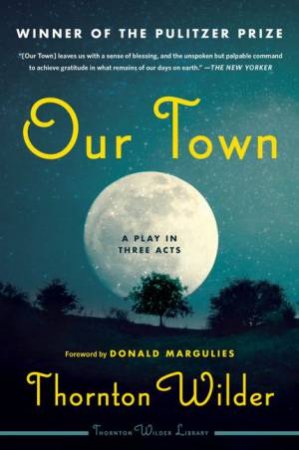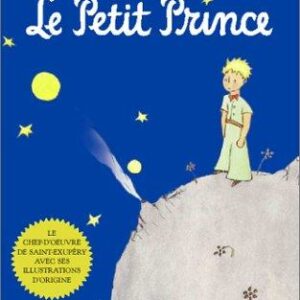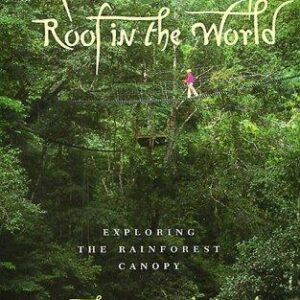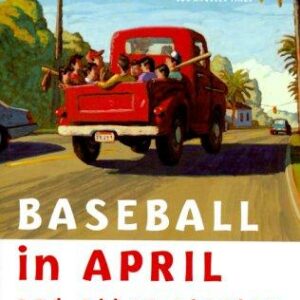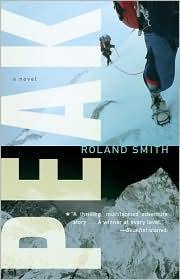Chasing the Thrill
$18.00
| Title | Range | Discount |
|---|---|---|
| Trade Discount | 5 + | 25% |
- Description
- Additional information
Description
“Daniel Barbarisi plunges into an adventure from another era when he goes in search of buried treasure, guided only by a cryptic poem, a mischievous art collector, and the footsteps another pursuer who died on the quest… Every page draws you deeper into this no-man’s-land where fortune—or tragedy—awaits.” —Christopher McDougall, author of Born to RunWhen Forrest Fenn was given a fatal cancer diagnosis, he came up with a bold plan: He would hide a chest full of jewels and gold in the wilderness, and publish a poem that would serve as a map leading to the treasure’s secret location. But he didn’t die, and after hiding the treasure in 2010, Fenn instead presided over a decade-long gold rush that saw many thousands of treasure hunters scrambling across the Rocky Mountains in pursuit of his fortune.
Daniel Barbarisi first learned of Fenn’s hunt in 2017, when a friend became consumed with decoding the poem and convinced Barbarisi, a reporter, to document his search. What began as an attempt to capture the inner workings of Fenn’s hunt quickly turned into a personal quest that led Barbarisi down a reckless and potentially dangerous path, one that found him embroiled in searcher conspiracies and matching wits with Fenn himself. Over the course of four chaotic years, several searchers would die, endless controversies would erupt, and one hunter would ultimately find the chest.
But the mystery didn’t end there.
Full of intrigue, danger, and break-neck action, Chasing the Thrill is a riveting tale of desire, obsession, and unbridled adventure. “Rousing . . . Barbarisi writes with gusto and portrays the eccentrics he encounters with a candor . . . He can also make a landscape come alive. I’ve read many descriptions of Yellowstone geysers, but none more striking than his evocation of how runoff from the Artemisia Geyser affects the immediate surroundings . . . Barbarisi tells the story so well that you should resist any form of peeking ahead and leave the matter in his capable hands.” —Dennis Drabelle, The Washington Post“The idea of a years-long quest throughout the Rocky Mountains in search of treasure represents competition of a different, fascinating sort. Barbarisi’s exploration of the who and how and why of those who hunted for the hidden treasure left by Forrest Fenn confronts fascinating questions about the sometimes indistinct realms of adventure and obsession.” —The Boston Globe, “Summer Reading 2021”“Chasing the Thrill leads the reader on an engaging armchair treasure hunt, a welcome escape in these waning days of covid. Daniel Barbarisi’s bold gamble — inserting himself at the story’s center — pays off. The writer emerges as a sympathetic protagonist, and his participation buys him entrée into a secretive and mistrustful club. By the final chapters of Chasing the Thrill, we share his wonder in watching the Fenn saga draw to an exhilarating close.” —Daniel de Visé, Washington Independent Review of Books
“Engaging . . . [Barbarisi] smartly shows how easy it is to get caught up in gold fever. The more he follows the hunt, the more he’s consumed by it. As a result, the reader also wants resolution on what searchers call the ‘solve.’” —Jeff Schulze, Fredericksburg Free Lance Star“Chasing the Thrill lives where all the best stories reside, on that thin edge between amazing and impossible. Daniel Barbarisi plunges into an adventure from another era when he goes in search of buried treasure, guided only by a cryptic poem, a mischievous art collector, and the footsteps another pursuer who died on the quest. Thanks to Barbarisi’s skill, every page draws you deeper into this no-man’s-land where fortune—or tragedy—awaits.” —Christopher McDougall, author of Born to Run
“Chasing the Thrill swept me up from the start and pulled me into a treasure hunt of surprising strangeness and danger—all true!—written with an intoxicating mix of clear-eyed journalism and down-the-rabbit-hole obsession, a riptide of a book right to the unexpected event at the end. What more is there to want?” —Michael Finkel, author of The Stranger in the Woods
“Chasing the Thrill is a fantastic tale made of all the best ingredients: adventure, obsession, compulsion, extreme characters, high stakes, big wilderness, and at its center: the race to find an elusive hidden treasure. Dan Barbarisi tells this story from the inside, as a participant swept up in a zany mystery. I devoured this book in one sitting.”
—Susan Casey, author of Voices in the Ocean“This tale of the most consuming treasure hunt in modern American history, and of the man who created it, is utterly captivating and thoroughly entertaining. Daniel Barbarisi gives the reader a satisfying sense of how deeply being part of a treasure hunt—beginning with believing that there is a treasure to hunt—summons the human spirit back to a faith most adults lost in childhood. At the same time, he reminds us just how close that faith is to madness.” —Randall Sullivan, author of The Curse of Oak Island
“Dan Barbarisi has done a startling bit of metaphysical gymnastics here. This is a story that pretends to be about one group of people looking for one small hidden box of treasure when in actuality it’s about every human being who has ever yearned, obsessed, believed, wanted or desired. It is at its core a profile of hope itself, which makes it, oddly enough, a book about the meaning of life.”
—Wright Thompson, author of Pappyland: A Story of Family, Fine Bourbon, and the Things That Last “Daniel Barbarisi’s Chasing the Thrill is a fast-paced testament to the extraordinary lengths some go for glory and adventure alike. In Barbarisi’s hands, you feel you are really hunting for treasure—hiking treacherous landscapes, decoding lines, moving deeper into the unknown—and come to understand how modern myths are born and take on a life of their own. This is a one-of-a-kind, brilliantly reported story about risking one’s life and livelihood to chase a dream, and the ways destiny and desire are two sides of the same golden coin.”
—Kirk Wallace Johnson, author of The Feather Thief
“Captivating . . . Shot through with dramatic plot twists, colorful personalities, and insights into the nature of obsession, this rollicking account will appeal to fans of The Orchid Thief and Born to Run.”
—Publishers Weekly, starred“Mesmerizing . . . Barbarisi’s narrative splendidly captures the timeless allure of buried treasure. Armchair adventurers will be riveted right up to the suspenseful conclusion.”
—Booklist“An engaging adventure story . . . A well-reported insider’s study on the engrossing and alarming fervor a search can inspire.”
—Kirkus DANIEL BARBARISI is the author of Dueling with Kings. He is currently a Senior Editor at The Athletic, after years as a reporter at The Wall Street Journal and The Providence Journal. He resides with his wife and two sons outside Boston, Massachusetts. 1
you can’t take it with you
Forrest Fenn had it all.
The Santa Fe art dealer had crafted the perfect life. After spending nearly two decades in the air force and emerging from Vietnam a decorated fighter pilot, the restless Texas boy in him had yearned for something new. So largely on a whim, Fenn had hitched a trailer behind his truck; hauled his wife and his young daughters, Zoe and Kelly, off to New Mexico; and struck out on a career as a dealer of art and antiquities, despite knowing little about either subject.
But he had charm, and he had flair, and he wasn’t afraid of hard work, so by the 1980s, Fenn had established himself as one of the Southwest’s preeminent art dealers, and a true man-about-town in the rarified, moneyed world of Santa Fe. He hobnobbed with politicians and counted celebrities like Robert Redford, Suzanne Somers, and Gerald Ford among his clients and friends. He lived in a sprawling walled compound just outside the downtown, and worked out of a palatial gallery right by the State Capitol, whose guesthouse had hosted luminaries from Jacqueline Kennedy Onassis to Steve Martin. When he was feeling real nice, he’d let visitors take a sip from the brandy bottle Jackie O. left behind.
In 1988, he was fifty-eight years old, still in the prime of an exciting and unpredictable life.
And then he learned it was all about to be taken from him.
Cancer. A big, angry tumor embedded in his inferior vena cava, under his right kidney. Doctors weren’t optimistic. They gave him a 20 percent chance to live. One-in-five odds? As a man who had stared death in the face repeatedly both over and in the jungles of Vietnam, those numbers didn’t sound particularly good to him.
Fenn did what he could to process the blow. For a few weeks, he let it soak in, allowed the reality that he was probably going to die to wash over him. Then he got mad. Indignant, even. Why did he have to go? Who said? Nobody had asked him.
The moment it boiled over, he was in the study of his home with his friend Ralph Lauren, the famed fashion designer. Fenn’s study was a magical place, a floor-to-ceiling gallery of artifacts, valuables, tomes, and curiosities from his travels. One piece, a Native American bonnet covered with ermine skins and carved antelope horns, caught Lauren’s eye. Believing his friend was not long for this world, Lauren wanted to buy the piece from him, give it a new home. But Fenn wouldn’t sell.
Lauren, exasperated, told Fenn he was being crazy. “Your time here is short, and you can’t take it with you,” Lauren declared.
“Well, then,” Fenn shot back, “I’m not going.”
Lauren laughed. They moved on.
But later that night, lying in bed, Fenn had a revelation: What if he could take it with him? Just a year earlier, his father, Marvin, a school principal, whom Fenn revered, had passed on—had taken his own life, actually. Marvin Fenn had been diagnosed with terminal pancreatic cancer. He’d been given six months to live. Eighteen months later, the resilient Marvin told his son Forrest that it was finally time for him to go. Marvin was going to take fifty sleeping pills that night, he said, and that would be that. Forrest pleaded with his father to wait—he had a plane, he said, and he’d fly up the next morning. The father matter-of-factly told the son that by then, it would be too late. It was.
Rather than being upset, Fenn saw wisdom in his father’s controlled exit, saw it as a dignified way to go. Fenn liked the idea of taking charge of his own departure. But he also liked the idea of taking it all with him. What if, he mused, there was a way for him to do both?
An idea started germinating in his head. He would get a chest, fill it with valuables—gold, jewels, artifacts he had collected over his years in the art world—and seal it up tight. It would be a real-life treasure chest.
Then he would write a poem—more of a riddle, really—containing nine distinct clues in consecutive order. If the clues were solved perfectly, they would lead the finder directly to the treasure. But this treasure map in a poem wouldn’t just lead to Fenn’s treasure chest. It would bring the reader to Fenn himself. Fenn planned to take his chest to the special spot identified in the poem, take pills, as his father had, and quietly leave this world. Eventually, he believed, someone would solve his riddle, and there they would find him, in his eternal rest: his sun-bleached bones, and with them his treasure.
Not long after doctors removed the tumor, and also his right kidney, Fenn began to set his plan into motion. Fenn learned a friend owned a twelfth-century bronze Romanesque lockbox, ten inches by ten inches by five inches, which he believed would make an ideal treasure chest, and he paid $25,000 for it on the spot. He started to fill it with loot. He began writing the poem. His plan was coming along perfectly. There was only one problem.
He got better.
Against all odds, Fenn beat the cancer. He had his life back. He sold his gallery that same year, and comfortably shifted into a sort of semiretirement.
But the idea stuck with him. It hadn’t been merely a moment of desperation, some end-around way of wriggling out of death’s grasp. Well, even if it was that, it was also something more. Fenn believed he had hit on something special, and he intended to follow through with some version of his treasure-hunting plan, even if his corpse would no longer be a part of it.
Over the next twenty years, Fenn filled the chest with all manner of valuables. Eventually, it would come to hold a truly magnificent fortune: 265 gold coins; dozens of gold nuggets; a gold dragon bracelet with ruby eyes, studded with diamonds, emeralds, and rubies; 2 gold frogs; a Mayan gold bracelet; a seventeenth-century emerald-and-gold Spanish ring; 2 pre-Columbian gold mirrors; gold dust; 2 gold nose rings; a Tairona fetish necklace thousands of years old; several jade figurines; 2 pre-Columbia wak’as—objects of ritual importance or power—and more, plus a copy of Fenn’s as-yet-unseen autobiography, stuffed into an olive jar. There was also a turquoise bracelet that had sentimental value to Fenn, a piece crafted from beads that explorer Richard Wetherill found when he discovered the Mesa Verde complex; Fenn won it playing a game of pool, and he said he would like to buy it back from whoever found the chest. The chest’s contents have generally been valued at somewhere between one and two million dollars, though some wildly generous estimates climb as high as four to five million dollars.
Fenn kept the chest in a walk-in vault in his home, occasionally altering its contents, and regularly bringing friends by to see this delightful conversation piece sitting on his shelf. Over time, he tweaked and refined his poem, as well. But perhaps most important, he set to work on the vessel for carrying the poem itself: his memoir.
Originally, when he believed he was dying, Fenn had hoped to have one of his many author friends write the memoir for him. But they all found the idea too morbid. So, long after he had recovered, close to the time when he actually hid the treasure, Fenn wrote it himself, crafting a hokey, folksy telling of his life story. The book, broken into small chapters and conversational vignettes, told of his time growing up in Temple, Texas, as the son of a school principal, and of the misadventures that he and his siblings would get into. It described how they would head to West Yellowstone, Montana, in the summers, and how Fenn fell in love with the place. How he served as a fishing guide, how he’d swum naked in the park’s warm pools, ridden his bike through its remarkable environs. It was a Rockwellian yarn of growing up in idyllic fashion, in a world that no longer exists.
But it was also an account of Fenn’s later life. How he joined the air force at the outbreak of the Korean War, and eventually found himself stationed in Germany, flying F-100 Super Sabre fighter-bombers with nuclear weapons strapped under their wings. How he made the rank of major, and deployed to Vietnam, where he was shot down twice, the second time in what was to be his final mission, over Laos. How he spent a harrowing night alone in the jungle, cowering from the blasts of B-52 bomb strikes, waiting for rescue helicopters to find him. How he finally got to call his wife, Peggy, after he was rescued, telling her not to worry about the telegram she’d received that his plane had been lost and no parachute was seen, telling her that he was alive.
Fenn’s memoir was at times wistful, at times elegiac, as it spoke of days gone by, of the old man’s journey into the art world, of the famous people he had known and the close friends he had lost. Of his deep, enduring love for Peggy. Of his joy at the lives of his children. Eventually, it told the story of his cancer. And then, in the final pages of the book, he introduced the poem, the one he had spent two decades fine-tuning, with its “warm waters halt” and “in the canyon down.”
By 2010, Fenn was eighty years old. His memoir and his poem were complete. His treasure chest was full. One day—he made sure no one knew exactly when, but it was around that same year—Fenn took the chest from his vault, headed out into the wilderness, and hid it. He did it alone, placing the treasure where “it would be difficult to find but not impossible. It’s in the mountains somewhere north of Santa Fe,” as he wrote in his book. The chest, he said, took him two trips from his car to hide, because it and its contents weighed an impressive forty-two pounds by then. Hiding it took one afternoon. Then he returned home, and, he said, even his wife was none the wiser.
Fenn printed one thousand copies of his memoir, which he titled The Thrill of the Chase, and donated them to a friend at Santa Fe’s Collected Works Bookstore to sell. He stipulated that a percentage of any profits go to a cancer charity, and that the rest go to the store. None would go to him; Fenn wanted to ensure that no one accused him of engineering this hunt in an effort to sell books. The memoir, he said, was sprinkled with subtle clues in its various stories, hints that would help supplement the nine clues of the poem.
Fenn held an event for the release of the book, and the peculiar story of the art dealer giving away a chest full of riches got a bit of press—the local paper, some area television stations. Fenn put it on his website, and that brought in a few searchers from outside the area. He delighted in the small-time coverage, playing the “eccentric millionaire” card for all it was worth as he and his treasure hunt became a southwestern curiosity.
At first, the hunting cohort was small. A few hundred, really, maybe a thousand, mostly people with some connection to Fenn, united by the internet into a loose community. But over time, the story spread—a few pieces in The Huffington Post, an item in Reader’s Digest.
Soon, a few blogs and forums dedicated to discussing the chase sprang up, and a devoted following began to form, arguing over details, discussing possible solutions, trading stories about adventures in Yellowstone or New Mexico or about a chance meeting with Fenn himself. As the community grew, Fenn remained an active part of the hunt; he’d put his email address in the book, so searchers would email him, tell him what they thought, where they were looking, why they loved the experience so much. The chance to correspond with the hunt’s creator became one of the most alluring features of entering the search. Fenn would engage with his hunters, countering their questions with cryptic half answers, and seemed tickled that no one could solve his riddle as he gleefully presided over the whole thing.
Still, for those first few years, it remained a minor venture, little known outside its core group of enthusiasts. Word really started to spread with the publication of a story on Newsweek’s website, and another in Hemispheres, the in-flight magazine of United Airlines. Fliers from around the world learned of this hunt, and took an interest. Sales of Fenn’s memoir spiked at the Collected Works Bookstore, and more printings had to be ordered.
What truly took it from a curiosity into a full-blown craze, though, was the Today show. In early 2013, reporter Janet Shamlian contacted Fenn, hoping to do a full feature on this odd phenomenon taking place in the American West.
And overnight, everything changed.
The piece aired on February 27, 2013. Thousands of copies of Fenn’s book were ordered that day. The upstart blogs chronicling the chase crashed from the excess traffic. Other national media outlets followed up with their own stories, creating a frenzy. Before long, there were hundreds of pieces in major media publications around the world, twenty-five-plus documentary films on the subject, and eventually seven more Today show segments, as Fenn giddily played media star anytime a reporter arrived with a notebook—or, better, a camera.
Over the next few years, the number of searchers who ventured into the Southwest actively looking for Fenn’s treasure went from mere thousands to what Fenn would estimate was well over 100,000. National parks like Yellowstone were suddenly overwhelmed, forced to create special announcements, rules, and cautions specifically for the brazen Fenn hunters as they tramped through protected wildlife zones and even dug up outhouses in search of Fenn’s “home of Brown.” Search and rescue teams got used to plucking hunters out of areas where they didn’t belong after they had tried to venture just one more mile in the cold, or the snow, or too close to a river, certain the treasure was just around the bend.
The state of New Mexico built a tourism campaign around the hunt, and in 2015, the mayor of Santa Fe proclaimed a “Thrill of the Chase” Day, to thank Fenn for bringing so many visitors to his town. An annual gathering, Fennboree, drew aficionados from all over the world to celebrate Fenn and discuss their latest efforts to find his loot. A whole industry grew around the chase, with hunters forming teams, guides selling their services or offering clues and supposed solutions for cash, and others minting coins with Fenn’s likeness on them and hawking them across the internet.
Meanwhile, the search community exploded, coalescing into a worldwide society with one thing in common: Fenn. Searchers fell in love and met their spouses on the chase, their shared obsession bring-ing them together. Factions and cliques developed, all racing to beat one another to the prize. Cautionary tales circulated of regular people who became too obsessed, who blew their life savings seeking the treasure, who went into bankruptcy to fund just one more expedition to the West. Sales of The Thrill of the Chase cleared the forty-thousand mark, and Fenn, basking in it all, wrote two more quasi-memoirs about his life (again mostly distributing the profits elsewhere, though profits from some of these subsequent works went into a trust for his grandchildren), each purporting to offer more clues useful in locating the box.
But for all that, no one found the treasure. Though according to Fenn, some at least had come close. Fenn was doing so many inter-views that he began to reveal additional information about the location of the chest— sometimes intentionally, sometimes apparently not.
Perhaps most interesting, he said he knew that at least one person had been within two hundred feet of the treasure, setting other hunt-ers on a frantic chase to determine exactly who the two- hundred- foot searcher had been, when it might have occurred, and, of course, where. But Fenn also began releasing new information to narrow down the scope of the chase, partly in order to stop searchers from doing silly things: He had to announce that the treasure was not associated with a “human structure,” to stop hunters from digging in those outhouses, for example, and pledged that it was not con-nected with a graveyard, because at least one man had begun digging up graves, and Fenn feared that his father’s was next. He officially narrowed the search area down to the four states of New Mexico, Colorado, Wyoming, and Montana, wiping out the parts of the Rocky Mountains that trickle into Canada, Idaho, and Utah. He revealed that the treasure was at least 8.25 miles north of the north-ernmost border of Santa Fe— perhaps so that searchers would stay away from his house— and that it was above 5,000 feet and below 10,200 feet, hoping that searchers would stop trying to climb to the tops of mountains. He made it clear that the chest was not “in close proximity to a human trail,” warned searchers never to go hunting alone, and advised that they confine their efforts to a search season of spring, summer, and early fall.
But as the chase exploded in popularity, these hints weren’t enough to deter hunters from putting themselves in dangerous situations, and it was only a matter of time before tragedy struck.
In February 2016, a Colorado man named Randy Bilyeu ventured out into the Rio Grande River with his dog as his only companion, in search of Fenn’s gold. It wasn’t long before he was reported missing. Six months later, his badly decomposed remains were found.
For the first time, Fenn and his hunt faced serious opposition. Appeals came from law enforcement, from government, and even from some searchers for Fenn to call the whole thing off. Fenn, defen-sive and prickly, said Bilyeu hadn’t followed his rules, and asserted that he bore no responsibility for the man’s death. He dug in his heels and said that his hunt was safe, releasing several new clues intended to keep hunters out of danger.
And for a time, that proved to be enough. Any controversy died off, and life around the chase returned to normal. By the start of the 2017 search season, Fenn’s quest was bigger than ever, with what he estimated were 350,000 searchers out on the hunt. That June, hun-dreds of them were set to gather north of Santa Fe for what was expected to be the biggest Fennboree ever, a true celebration of Fenn and his wondrous treasure chest.
Beep and I planned to be among them. US
Additional information
| Weight | 1 oz |
|---|---|
| Dimensions | 1 × 5 × 8 in |



